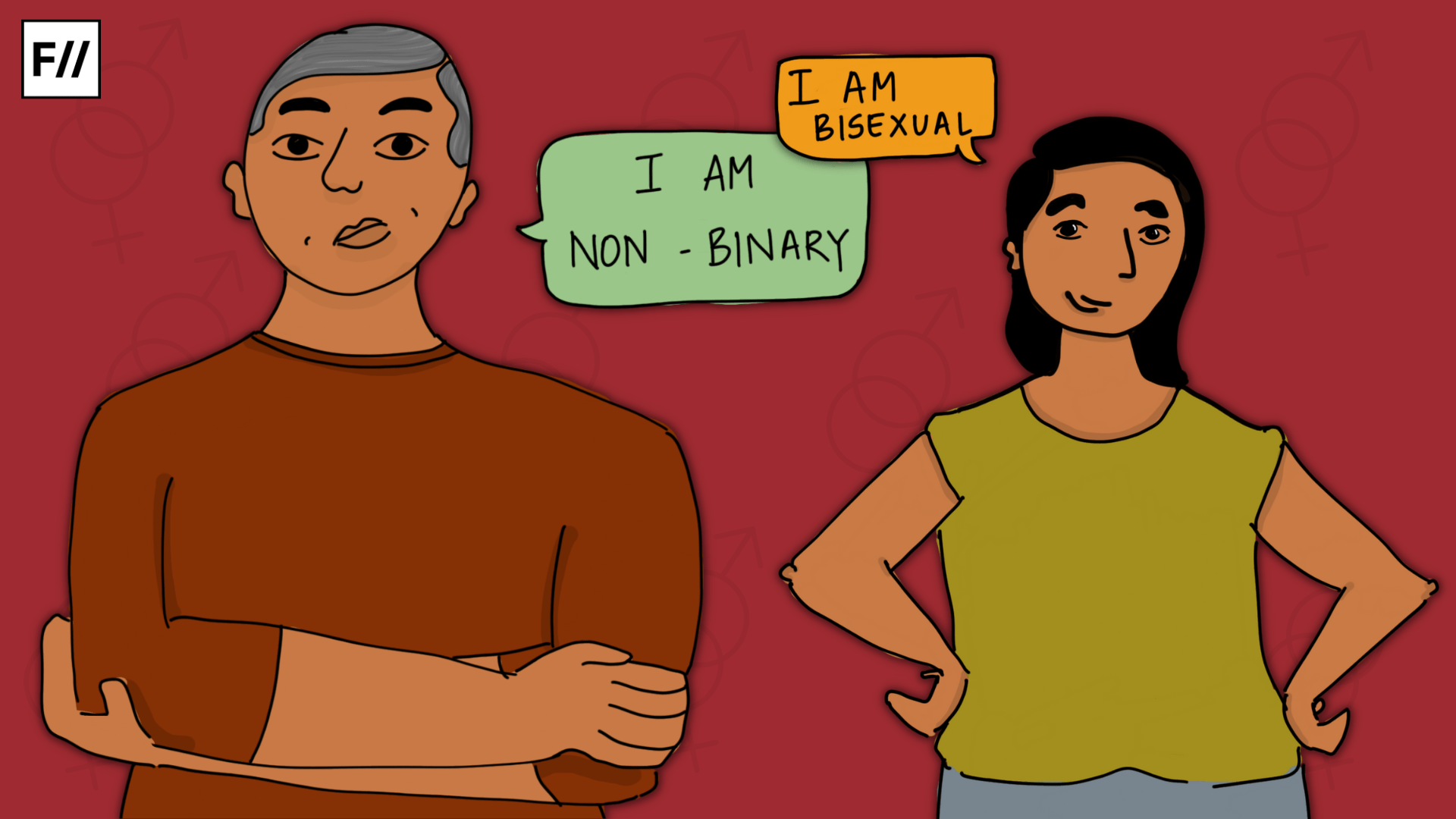“Is it a boy or a girl?“
“Girls are weak!”
“Boys don’t cry.”
The primary idea behind all these statements is usually determined based on the external genitals of an individual. Society sees individuals within the binary of “female” and “male”. But gender and sexuality are not limited to these terminologies. For that matter, these terminologies aren’t even correct representations. What is gender and sexual identity? Why do they exist in a spectrum? How to navigate questions about sexual identity and preferences and challenge the conservative belief?
Let’s try and break it down and unpack all these questions.
The difference between gender and sexual identity
For a lot of people, their sex assigned at birth may be distinctly different from their gender identity. Gender identity is how a person identifies and sees themselves. A person can identify as a man, woman, trans person, genderqueer, non-binary, or none of these. Whereas sexual identity is based on who they are attracted to, be it someone of the same gender, a different gender, or more than one gender. It is important to respect this range of sexual and gender identities while talking about Comprehensive Sexuality Education, and sexual and reproductive health.
Existing in a spectrum
We have all heard the phrase that “Sexuality and gender identity are fluid and exist on a spectrum.” Let us try and unpack and understand this. Understanding sexual identity and gender involves understanding a wide range of issues, emotions, and experiences that determine the same. Sexuality is more than acts of sex. Providing information on sexuality is not the same as teaching someone how to have sex. It is more focused on the well-being of the individual and talking freely about one’s choices in sexual partners, and expressing one’s sexual identity, among others.
Also read: What Is Comprehensive Sexuality Education? All You Need To Know
Society prescribes certain cultural rules that are considered “appropriate”. These can have damaging effects on people who do not conform to these ‘norms’. Furthermore, there is a range of gender identities and sexual orientations that one might identify with. And that can change and vary over time. It need not be the same and static. The freedom to express one’s gender identity and sexual identity as one chooses is necessary for an individual to attain self-respect and well-being.
Stigma and discrimination
In India, the society, as well as the school system, is yet to be well-informed with the correct understanding of gender and sexual identity. Usually, discussions on gender and sexual identities are avoided both at home and in school, because of the taboo and stigma around it and also because they are considered ‘adult’ issues. There is a huge focus on discipline and avoiding ‘such topics’ rather than facilitating the sharing of correct information and messages about sexuality. The understanding of sexuality thus gets limited to the biology books that operate on a strict male-female binary.
This in turn leads to many young adults being subjected to ridicule, bullying, shame, and trauma on multiple levels, as they are perceived as being “different” from others. Often the erasure of these identities from school curriculums makes queer and trans children feel out of place. People with disabilities, polyamorous individuals, and intersex people, among others, are all put under the same binary, which further pushes them into fear. This not only curbs their basic rights to freedom of expression and bodily integrity but also has many long-standing implications on their self-image and identity.
Challenging the discrimination
We need to understand that shielding young adults from conversations around sexuality does more harm than good. There is a need for giving them the vocabulary to understand themselves and their emotions from an early age. Contrary to popular belief, children begin to develop a sense of gender and sexual identity as they are growing up. Therefore it is important for all stakeholders—parents, teachers, institutions, and policymakers to be accepting and keep themselves informed of the prejudice and the diversity in gender and sexual identities, as well as have the correct information.
Young adults should have access to reliable and accurate information and not vague and incomplete knowledge. Thus it becomes extremely important to teach and learn about CSE at institutional levels. Understanding gender and sexual identity is primary for empowering individuals to make healthy and informed decisions. A huge part of understanding gender and sexuality involves acknowledging that gender is a social construct. Society accords gender roles and behaviours based on the ‘biological sex’. It is of prime importance to challenge these ideas every step of the way and unlearn the problematic teachings.
Also read: The Ins And Outs Of Body Image And Consent
About the author(s)
Shriya is a former student of literature and a multimedia journalist with an interest in sports and human rights. She can be found watching Shah Rukh Khan movies or listening to Ali Sethi and 90s Bollywood songs. She enjoys a good cup of black coffee multiple times a day and is often compared to 'Casper, the friendly ghost'.




